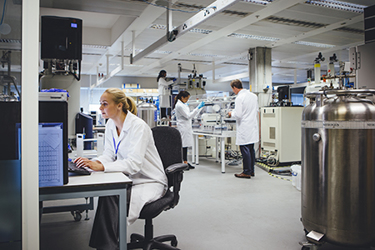Increasing Chromatographic Performance Of Acidic Peptides In RPLC-MS-based Assays
By Robert E. Birdsall, Jacob Kellett, Samantha Ippoliti, Nilini Ranbaduge, Henry Shion, and Ying Qing Yu

Metal-ion mediated adsorption of analytes as a contributing factor in poor peak shape, tailing, and diminished recovery of compounds in LC-based techniques can negatively impact data quality and assay robustness. Analytes exhibiting phosphate groups, uncharged amines, and deprotonated carboxylic acids are particularly susceptible to these phenomena and are commonly encountered in the development and manufacturing of protein-based therapeutics. Current methods for addressing analyte/surface adsorption include ion-pairing additives, hardware passivation, and high-ionic strength mobile phase. These strategies, while proven effective, can be challenging to deploy in terms of instrument/technique compatibility in the case of MS-based methods as well ensuring they can be implemented in a safe and efficient manner with respect to lengthy passivation procedures that can involve corrosive reagents.
The newly introduced ACQUITY Premeir brand columns with MaxPeak HPS Technology is Waters solution to these challenges. The ACQUITY Premeir Columns are designed to deliver exceptional chromatographic performance while minimizing analyte/surface interactions of sensitive compounds. The objective of this application note is to demonstrate how ACQUITY Premeir with MaxPeak HPS Technology can increase productivity in the lab and mitigate risk through increased reproducibility, recovery, and robustness of assays performed in the development and manufacturing of biopharmaceutical drug products.
Get unlimited access to:
Enter your credentials below to log in. Not yet a member of Cell & Gene? Subscribe today.
